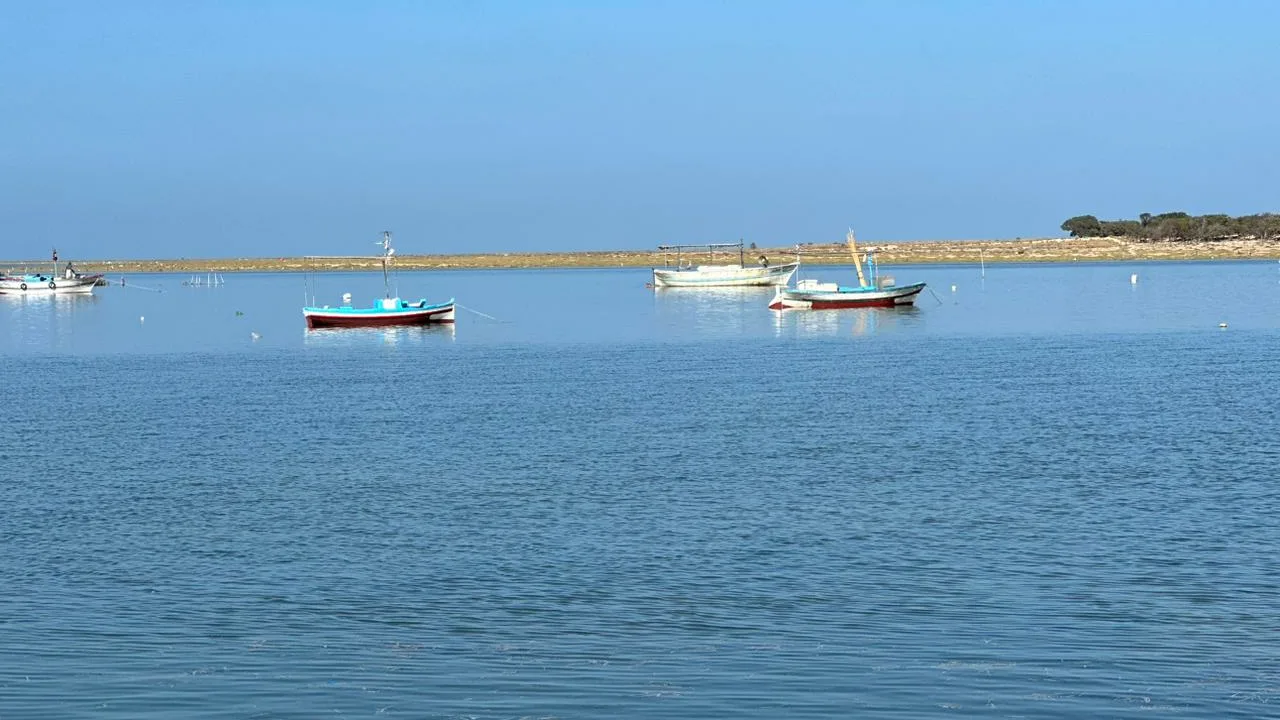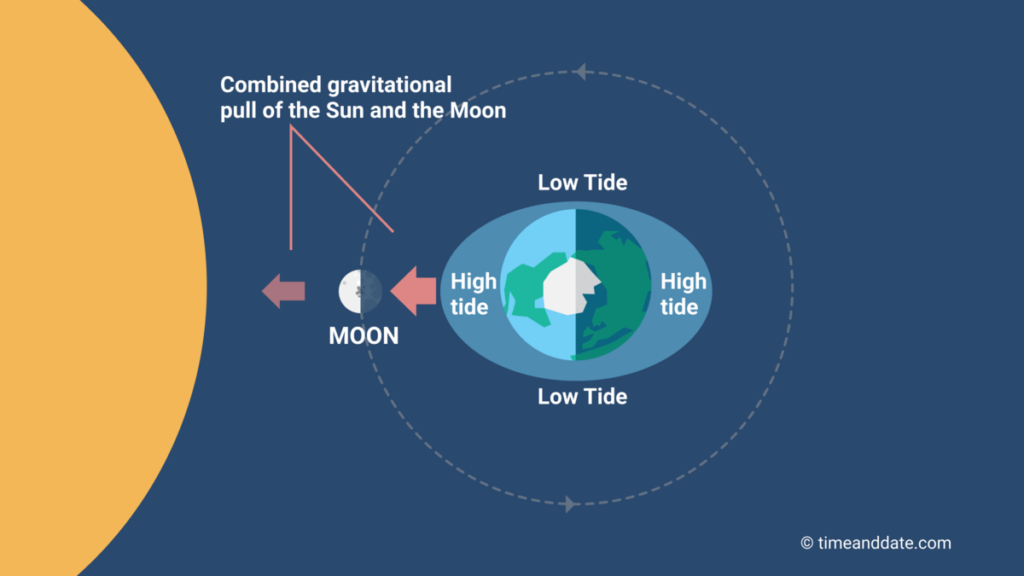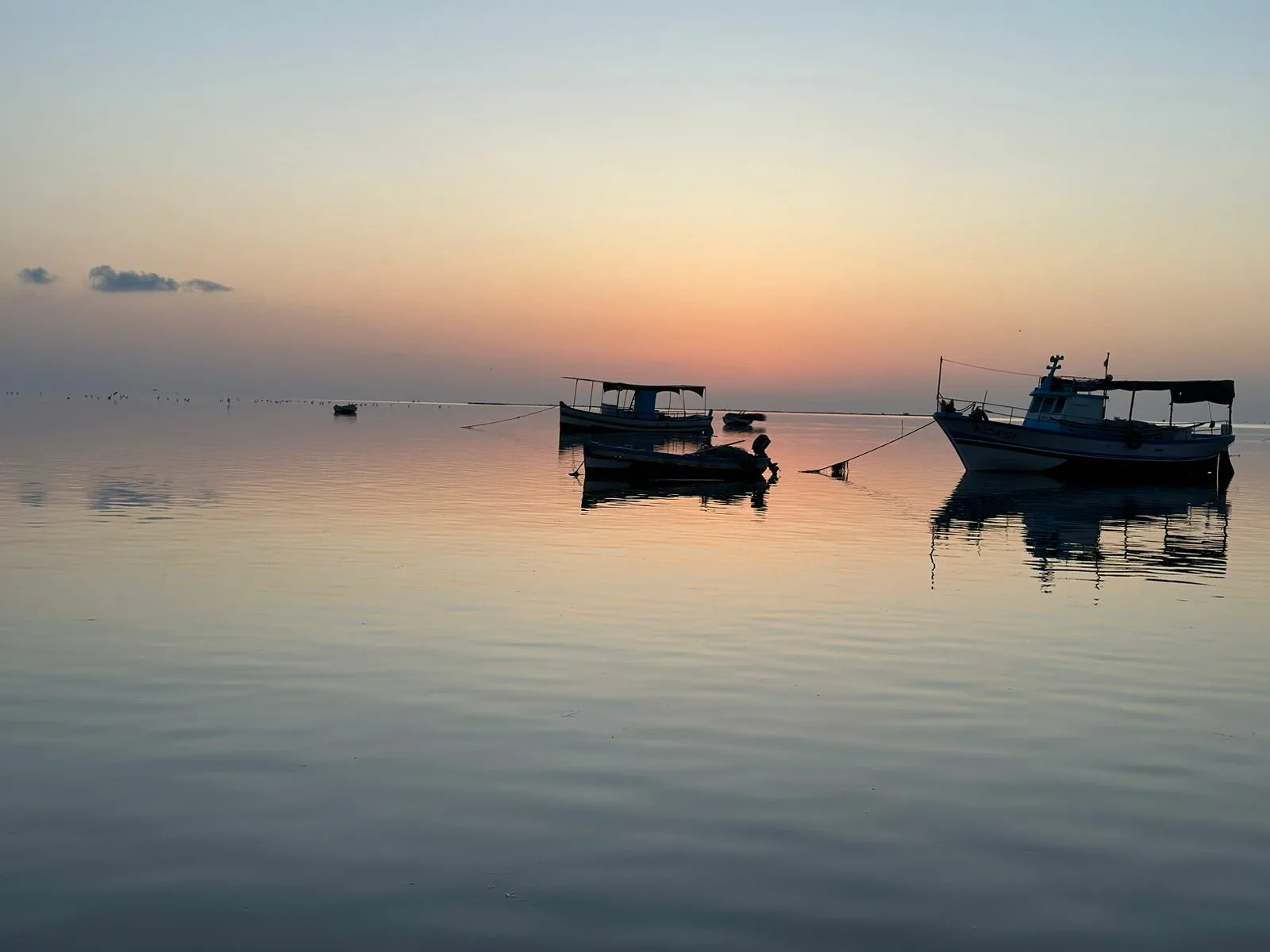Tides are an enthralling natural phenomenon caused by periodical cosmological interactions between the Earth, the sun, and the moon, which results in a regular series of rising and dropping water levels along our beaches, cliffs, or harbors. The Equinox is the name given to this exceptional phenomenon which occurs twice a year. Locals, agriculture, and traditional fishing activities are strongly linked to tidal phenomena in Kerkennah, where the archipelago also faces climate change, and where the intensification of tides can directly affect the daily lives and activities of the islands’ inhabitants. These difficulties highlight the critical need for a better understanding of these phenomena and adaptive measures to address the evolving environmental conditions in this coastal area.
Kerkennah, October 2023
Kerkennah, a Tunisian archipelago located East of the city of Sfax and vulnerable to coastline erosion, remains a sanctuary for artisanal fishing, a site treasured by both locals and visitors from all over the world. Lazhar Ezzeddine, a 59-year-old Kerkennah fisherman, expressed sadness when he witnessed Kerkennah’s growing effect and threats.

I’ve been learning about the islands and the sea from my grandpa, who, like me, is a fisherman. In the 1980s, I recall walking around the seaside with him. Even back then, I could see changes, changes in the shoreline, changes in the sea, and changes in the catches. We, the people of Kerkennah, grew up adjacent to the sea and have been aware of the tides for as long as I can remember. They are a common occurrence in our life. However, they have recently become increasingly difficult for our shores.
L.Ezzedine
Understanding Equinox tides
The equinox tides might be an enigmatic and puzzling phenomenon that is little understood, leading to a lot of questions and curiosity. Tunisian Physical Oceanographer, Dr. Slim GANA, renowned for his expertise in oceanography and cosmometeorology, sheds light on the intriguing equinox tides. As explained by S.Gana, the term « Equinox » signifies the equality between day and night, with 12 hours of daylight and 12 hours of nighttime. This complicated natural phenomenon is dependent on a number of parameters, the most important of which are the water masses, the mass of the Earth, the distance of the Sun to the Earth, and its mass.

The sun exerts a force on the water particle that is stronger as the distance between the ocean’s surface and the sun decreases according to the calendar. Because of its closeness to Earth, the moon’s effect, despite its lesser mass than the sun’s effect, confuses matters even more. During this phenomenon, the moon’s influence is two to three times larger than the sun’s. Specifically, when the sun aligns vertically over a point during the equinoxes, gravitational force reaches its maximum, creating a unique and complex interplay between the water masses, the Moon, the Sun, and the Earth.
Because the sun and moon both attract water, tidal forces are heightened when the Earth, Moon, and Sun align. Therefore, the equinoctial tides happen when the sun and moon both cross the equatorial plane at the same time. In such condition, we are experiencing a maximum tide. It is called Equinox tide.
Slim Gana
Discovering the elements behind the Equinox tides’ modulation
Slim Gana’s insights highlight the connection between equinoxes and high tides. When we talk about tides, we’re referring to periodic astronomical events. According to S. Gana, the moon and other celestial bodies related to tides go back to their original positions every 19 years (Saros period). The tide phenomenon involves various phases, such as a 12-hour semi-diurnal period, periods of 15 days, 28.5 days, 6 months, and 1 year, and a longer period of up to 19 years. The generative power of tides, an astronomical force, depends on the positions and distances of celestial bodies. The measured periods are related to the complexity of tides. “That’s why the modulation of these tides involves a multitude of factors and possibilities related to this multitude of conditions and periods,” explained S. Gana.
The equinoxes occur when the duration of daylight equals the duration of night, marking the transition between seasons, typically between winter and spring and between summer and autumn, around March 20, the vernal equinox occurs, followed by the autumnal equinox around September 22. Equinoctial tides peak on the day of the equinox but gradually diminish afterward due to the lunar effect. We can say that for a period of approximately 4 to 5 days, the impact of the moon is felt more or less two days prior to and two days following the equinox.
Slim Gana
According to the National Oceanography Center, low atmospheric pressure tends to raise sea level and high pressure will tend to depress it. As per the conclusions drawn by Slim Gana, the pressure is another factor that, even when it’s not equinoxes, can affect the amplitude of the tides. The sea level reaction in reverse barometer is the increase of sea level caused by low pressure on the sea surface. On the other hand, the sea level drops when the pressure rises above the standard value of 1015 mbar. “Astronomical forces and barometric tide are the two factors that can modify the amplitude of the tide, along with the wind,” confirmed S. Gana.
Kerkennah’s Tides: Delving into its unique intensity and reasons behind it
As highlighted by Slim Gana, in areas with flat seabeds, such as the Kerkennah Islands, where the shelf has a large extension seawards and gradually slopes, one needs to walk for hundreds of meters to reach depths of just one or two meters. In such cases, the tidal phenomenon is intensified. This means that the advance of the sea on the coast is much more significant in regions with a flat seabed compared to cliff zones, where the sea level may rise but without a substantial advance. Therefore, this phenomenon is solely attributed to bathymetry*.

Tides and Fishermen in Kerkennah: A Lifetime of coastal synergy and adaptation
As reported by Slim Gana, equinox tides are a natural cosmological phenomenon and have no negative impact. The only negative impact that results from human intervention is construction on the coast. As previously stated, the tidal phenomenon corresponds to the gravitational attraction of the Sun, Moon, and Earth on the water masses, inducing both vertical and horizontal displacement of the water masses. Moreover, the horizontal displacements are actually the tidal currents. In terms of amplitude, tidal currents in places like Kerkennah can be significant, reaching speeds of 60 cm per second or even 1 meter per second in narrow channels, which can contribute to a certain disturbance for artisanal fishing practices in the region.
The tides, a phenomenon known to fishermen and all, are becoming increasingly intense on our coasts, As a fisherman in Kerkennah, I am deeply affected by the challenges posed by high tides. The absence of barriers during elevated water levels allows fish, particularly those in the “charfia”, to escape, impacting our ability to catch them. Additionally, the force of currents breaks the “charfia” fixed fisheries when they flow onto it, creating further difficulties and placing a heavy burden on the livelihoods of fishermen who are compelled to invest additional resources in fixing their “charfi” and incurring extra costs.
Lazhar Ezzedine

Furthermore, the fisherman L. Ezzedine affirmed that the tides are more noticeable on their islands than on other shores. These tides have an impact on the livelihood of the fishermen as well as the coastal land itself since the rise in water levels causes salt to seep into the ground, making the land unstable and unsuitable for agriculture, especially in areas with low elevation. In response, fishermen find themselves compelled to relocate, searching for areas with lower water levels to optimize fishing conditions based on depth. “During high tides, fishing becomes impossible, and the use of our charfia is restricted, creating a devastating period for us. We find ourselves in a state of waiting, akin to a suspended time, with no fish and no resources.” Voiced the fisherman, with a heavy heart.
Kerkennah’s struggle against climate shifts and island subsidence
Meanwhile, based on Slim Gana’s statements, the lack of awareness surrounds the issues of sea level around the Kerkennah islands, primarily stemming from two key phenomena. First, the rise in sea level due to climate change, as the elevated temperatures lead to thermal expansion of the water mass and the flooding of the low coastal zones. Second, subsidence, is due to a tectonic phenomenon. “Not the tides, but climate change and the island’s subsidence are the true threats facing Kerkennah” claimed Slim Gana.
When homes are flooded and many people are in great distress. The immediate danger is that our island will sink.
Lazhar Ezzedine
Data Gaps: The imperative of a tide gauge network in Tunisia
According to Slim Gana, understanding the maritime phenomenon requires observation, but unfortunately, there is insufficient monitoring along our Tunisian coasts. To address this gap, the establishment of a network of tide gauges is essential. The National Oceanic and Atmospheric Administration states that a tide gauge, one of the parts of a contemporary water level monitoring station, is equipped with sensors that measure the surrounding water level continually. Numerous activities related to the coast depend on this data, including safe navigation, sensible engineering, and the restoration and preservation of habitat. “In fact, tide gauges measure water levels relative to the land and can detect subsidence. Their installation is cost-effective, with real-time data transmission, especially in the current era of 5G and digital technology. Currently, access to precise tide information in Tunisia is limited, while it should be available in real-time to any stakeholders involved in the Blue Economy.” declared S. Gana.
Additionally, he highlights that although satellites can measure various aspects, in-situ measurements, such as those provided by tide gauges, are essential to validate tidal models. To conclude he cites examples from neighboring countries such as Malta and Italy where tide gauges and local observations are used to improve models and manage the coastal zones, underscoring the need for a similar approach on the Tunisian coast. With this means, Tunisian coastal zone managers, researchers, fishermen, fishing organizations, and anyone in need of tide data can easily access and detect precise tide timings. This enables them to prepare accordingly, deploy equipment for island subsidence monitoring, and effectively monitor coastal areas.
- Bathymetry: the measurement of depth of water in oceans, seas, or lakes.
This article was developed in collaboration with the Earth Journalism Mediterranean Initiative Media project.
Copyright © 2023 Blue Tunisia. All rights reserved
References:
- https://noc.ac.uk/files/documents/business/Tides-and-Meteorological-Effects.pdf
- https://www.oceanclock.com/fr/blog/5-pourquoi-les-marees-dequinoxes-sont-elles-plus-fortes-
- https://fr.quora.com/Pourquoi-les-mar%C3%A9es-sont-elles-plus-importantes-%C3%A0-l%C3%A9quinoxe
- https://www.meteo-paris.com/actualites/marees-d-equinoxe-quels-risques-y-sont-associes-12-mars-2020.html
- https://www.geo.fr/environnement/quelles-differences-entre-un-equinoxe-et-un-solstice-204527
- https://jeunes.cnes.fr/fr/marees-quand-les-astres-jouent-avec-nos-oceans
- https://www.researchgate.net/publication/287980459_Le_point_sur_les_marees_d’equinoxes_dans_l’estuaire_du_Saint-Laurent
- http://www.ispm.ac.ma/wp-content/uploads/2020/03/S52-OCEANOGRAPHIE-CHAPITRE-4-Les-mare%CC%81es.pdf




